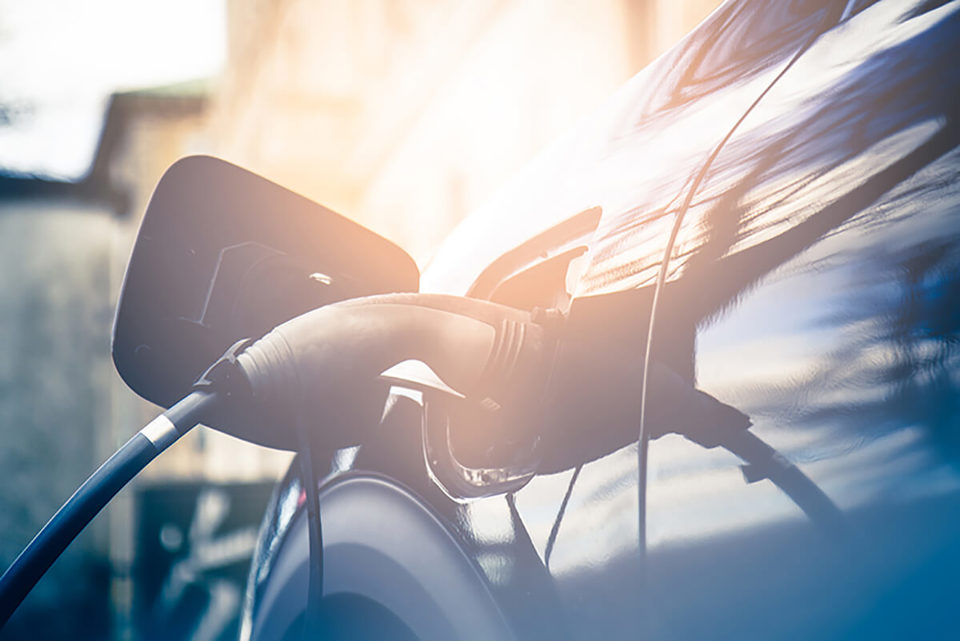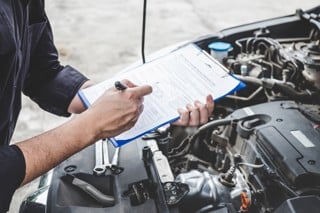The way the MOT measures emissions from electric vehicles (EVs) has been criticised for not taking account how the electricity used to charge the vehicle has been generated.
Under the current MOT, the test measures emissions from a vehicle’s engine, therefore a purely electric vehicle registers zero emissions.
However, in a study for Kwik Fit, 45% of drivers said they believe that in the future, the MOT should take into account emissions from electricity generation. This figure rises to 51% among owners of cars less than three years old.
Only a quarter of owners (27%) believe that the source of electricity should not be considered in the test, while over a quarter (28%) said they didn’t know.
The practicalities of assessing the electricity used are significant, however, as it would require information to be relayed from the charging systems to the vehicle.
This would then need to be measured by the MOT testing equipment, requiring data standards to be put in place and major developments to the test.
Eric Smith, MOT scheme manager at Kwik Fit, explained: “To develop the MOT to assess the source of electricity used by EVs would require multi-industry standards to be set up, and the test may not be the best way to ensure drivers are opting for cleaner energy.
“However, this research does highlight that millions of drivers believe there should be a way of testing overall emissions for vehicles using electricity.
“It’s worth remembering that currently hybrid vehicles are not tested for emissions in the MOT, even though they still run on petrol or diesel for some of the time, so perhaps the first change to make should be to include emissions testing for hybrids.”
With modern cars being fitted with an increasing range of technology to improve safety or to aid drivers, Kwik Fit’s study also asked motorists which of these developments they thought should be added to the components tested in the MOT.
More than half of drivers (52%) said that emergency braking systems - which apply the brakes automatically when getting too close to another car – should be in the MOT if they are fitted to the vehicle.
A third of drivers (33%) thought that radar, other sensors or cameras used for autonomous driving systems should be checked in the MOT, while three in ten drivers (30%) said lane assist technology should be included.
Start-stop technology was stated by just over a quarter of drivers (26%), with the same proportion (26%) believing parking sensors should be part of the annual test. Parking or rear-view cameras were cited by 24% of drivers as worthy of inclusion.
Interestingly, the Kwik Fit research found that drivers who have received an MOT failure are most in favour of developing the test. Those whose car has failed its MOT in the last three years are 15% more likely to believe that these safety features or driver aids should become part of the MOT compared to drivers who have not had an MOT failure in that time.
This perhaps indicates that drivers who have had an MOT failure are more likely to appreciate the important role the test plays in vehicle safety by highlighting problems in components they rely on.
Driver views on testing technology in the MOT
|
Safety technology / driver aid |
Proportion of drivers believing this should be tested in the MOT when fitted to a vehicle |
|
Emergency braking systems (technology which applies the brakes automatically in case of emergency or getting too close to the car in front) |
52% |
|
Any radar or other sensors used for autonomous driving systems |
33% |
|
Any cameras used for autonomous driving systems |
33% |
|
Lane assist technology (technology to ensure a car does not drift out of lane) |
30% |
|
Start stop technology |
26% |
|
Parking sensors |
26% |
|
Parking or rear-view cameras |
24% |
|
None of the above |
25% |
Smith said: “It’s important that the MOT does not become overcomplicated and focuses on checking the most important elements in vehicle safety. However, motoring technology is continually advancing and the MOT has always been developed to reflect that.
“As more and more drivers have new technology in their vehicles, it is natural that they will get used to relying on these driver aids, therefore it is essential that these are regularly checked to ensure they will work properly in an emergency.”
MOT Bookings double
MOT bookings through BookMyGarage.com almost doubled over the past six months as millions of motorists took advantage of the MOT extension.
The MOT and service price comparison site found bookings for just MOTs rose by 63%, while combined MOT and service bookings more than doubled.
The DVSA issued a six-month MOT extension to all vehicles due a test between March 30 and July 31 last year, as part of measures designed to help reduce the spread of Covid-19 during the first lockdown.
February signals the end of the MOT boom as the tests for all vehicles eligible for the extension will have now been conducted.
The bookings data from BookMyGarage.com showed a 50% year-on-year rise last month as MOT tests for the last of the vehicles granted the extension took place.
Karen Rotberg, co-founder of BookMyGarage.com, said: “The last six months have proved to be extremely busy for garages who have worked hard to accommodate both MOTs which were extended and those that are normally due at that time of the year.
“It’s important to remember that it’s not just a case of doing MOTs, it’s also the servicing and repair work that accompanies the majority of tests. In fact, we had more than double the number of combined MOT and service bookings than we did for just MOTs.
“The second quarter of 2021 will be challenging for garages, with millions of MOTs effectively now not taking place during these months.
“That said, it’s worth remembering that three-year-old cars which are due their first MOT test this year, and were first registered between April and June, will help recover some of the work lost during this difficult period.”






















Login to comment
Comments
No comments have been made yet.